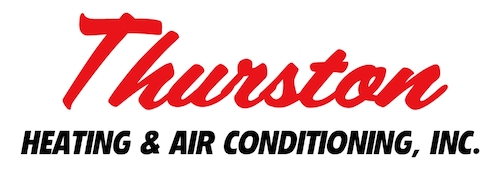
If you’re needing air conditioner installation in Kearney, you should also be investigating your new air conditioner’s SEER rating.
SEER stands for Seasonal Energy Efficiency Rating. In short, it looks at how productive your air conditioner is at converting electricity into chilled air. A high number indicates your air conditioner is more efficient, which is great for your electrical expenses.
However, there are lots of differing options to choose from for air conditioners. And a higher SEER rating typically includes a bigger cost. So, how can you find out which one is right for your house?
At Thurston Heating & Air Conditioning, we provide a free, no-pressure home comfort analysis. You can get one by contacting us at 308-624-3485. Our knowledgeable air conditioner installers will work with you to help you locate the right air conditioner for your needs. Plus, they’ll also offer you a free, no-obligation estimate.
Right now, let’s go over SEER ratings and how they can influence your family’s comfort. And your electrical bills.
What Does the SEER Rating Really Matter?
In 2016, the federal government made new SEER guidelines. New air conditioners must be at baseline 13 SEER in the northern United States and 14 SEER in the southeast and southwest. If you don’t know when you had your air conditioner replaced or what its SEER rating is, you can look at the sticker on the system outside your house. If you can’t locate the sticker, you can get in touch with us at 308-624-3485 for help.
If your air conditioner was replaced before that date, it’s likely much less efficient. Air conditioner technology has rapidly evolved in the past couple of years, with major advancements in energy efficiency and smart home capacity. Connecting your new air conditioner with a smart thermostat could help you conserve more on cooling costs, as the thermostat can automatically regulate your temperature settings when you’re out.
If your present air conditioner has a SEER rating between 8 and 10, adding a 14-SEER system could save you around 30–50% on annual utility expenses. Your savings depend on your air conditioner size and your temperature settings.
Is the highest SEER Rating the Best?
An air conditioner with a higher SEER rating will be more efficient at transforming electricity for cooling. The best efficient models, which can go as high as 26 SEER, have ENERGY STAR® endorsement. This certification shows the air conditioner meets EPA guidelines for energy savings and environmental conservation.
While ENERGY STAR air conditioners are frequently more expensive, you’ll usually get the difference returned throughout the years through reduced utility expenses. These air conditioners, which are generally rated 16 SEER and higher, consume about 8% less power than other new models, according to ENERGY STAR.
One of the biggest differences between a 14 SEER and 16 SEER is variable-speed capacity. A variable-speed air conditioner can cool at varying speeds. This refines comfort for your home while keeping your electric bills down. It can also keep temperatures and humidity more balanced, since it can go for longer without needing a lot more power.
When installing a variable-speed air conditioner, you’ll want to make sure that your furnace or air handler is compatible. This is since your air conditioner uses this unit’s blower to distribute cool air around your home. Furnaces only last for around 20 years, so if yours is around that age, we advise getting furnace installation at the same time so you can get all the benefits of your variable-speed air conditioner.
When you’re set to replace your air conditioner, the cooling specialists at Thurston Heating & Air Conditioning are available to assist you. Reach us at 308-624-3485 to set your free home comfort analysis today.
